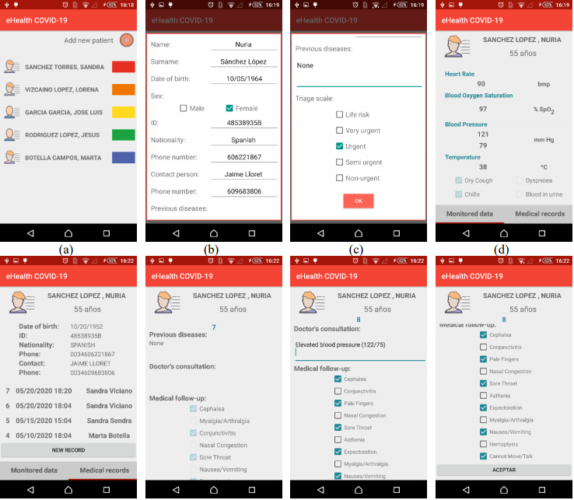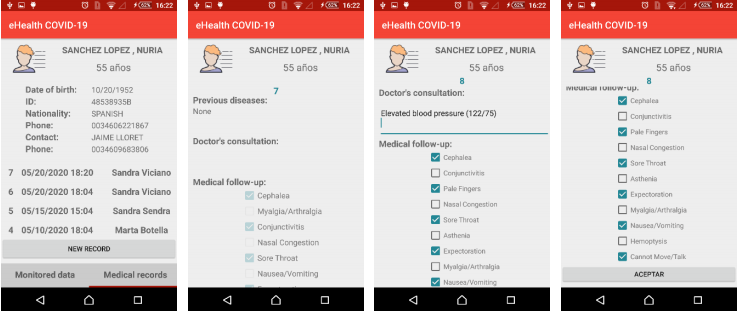Researchers from Campus Gandia of the Universitat Politècnica de València (UPV) have devised a new system for nursing homes that helps to monitor people infected with COVID-19 in real time. In addition, it is capable of alerting the medical and nursing staff in the event that there is a problem that requires immediate attention.
The system consists of an Android app –RTM-COVID- and an electronic device – a sort of pelvic belt– that uses various sensors to monitor vital signs such as temperature, blood pressure, heart rate, oxygen saturation or blood in the urine. It can also monitor the respiratory rate of the person wearing it, instantly detecting breathing difficulties, as well as other parameters such as chills or dyspnea.

All the data collected by the different sensors in the system are recorded and processed on a local server in the nursing home’s own network so as to preserve patient privacy and their clinical data.
“The system processes information in a way that is transparent for whomever is using it, combining the data from all the sensors and equipment. It analyzes it jointly and determines whether there is any situation that requires attention,” according Jaime Lloret and Marta Botella-Campos, campus researchers. With this application, the medical and nursing staff are informed in real time on the emergency level and they will be informed instantly if there is an alert, since the system sends an alarm to their mobile phones or tablet.

“These messages will only be sent when the emergency level is yellow or higher, which means that medical personnel will have 60 minutes or less to visit the sick person. The information provided in these messages includes an icon whose color determines the level of emergency, as well as the name of the person in need of medical attention and the cause of the alert,” explains Sandra Sendra, also a campus researcher.
To determine the level of emergency, the system relies on the Manchester triage system, which classifies patients into five categories, each of which is associated with a color code and maximum service time.

In addition, the solution devised by the project team will help medical staff to keep track of other subjective parameters, such as muscle pain, dizziness, coughing up blood, etc.
According to the researchers, the public health emergency caused by the SARS-CoV2 virus has revealed the need to supply medical professionals with remote monitoring methods that allow them to track the evolution of infected patients and receive alerts when their condition worsens. Although there are already applications aimed at assisting patients affected by diseases such as diabetes or stroke, most of these systems are based on manual data entry and, given how little is known about the conditions caused by COVID-19, specific monitoring and follow-up methods have not been implemented to speed up triage and use the available resources more efficiently.
“For this reason, we have devised this system to monitor the vital signs of people infected by the Coronavirus in nursing homes and notify the medical personnel in charge of supervising their condition. Although the application can be downloaded on Google Play or the App Store for free, its access will be restricted and must be supervised by each organization to guarantee the privacy and security of the information. Also, since the system will be accessed locally, the installation of the server and the database can be carried out quickly and easily, so that it can be used by the different organizations as quickly as possible,” concludes Jaime Lloret.

More information:
Source: Luis Zurano, Scientific Communication Unit











